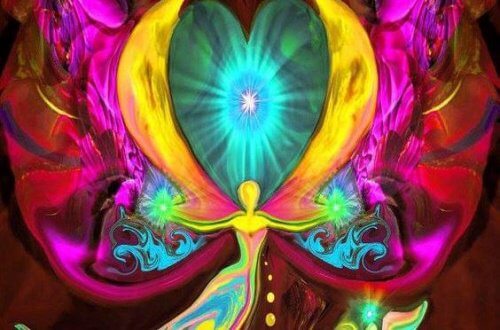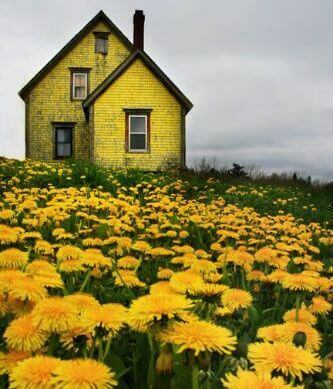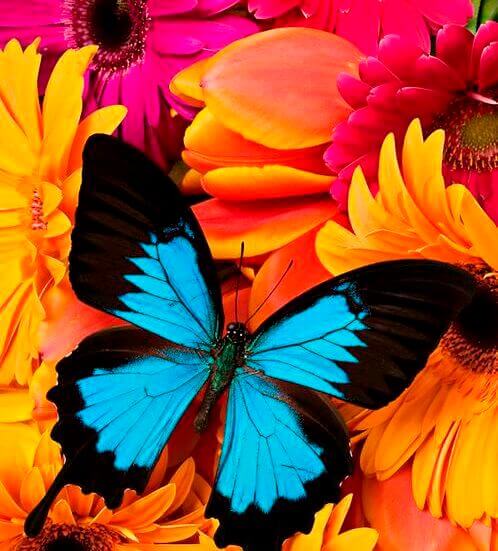How do Different Colors Affect Your Feelings?


Written and verified by psychologist Valeria Sabater
There are certain colors that can actually affect our mood. As a result, it’s a good idea to understand a little bit about how the psychology of color works. This will enable us to create work and private spaces where we can live and work better. Take a look at how different colors affect your feelings.
Everyone has a favorite color. Although we don’t know fully know why, there are certain shades and tones that ground us and can even define us.
We will present you with a summarized version of an interesting study conducted by psychologist and sociologist Eva Heller in her book The Psychology of Color. This book is composed of references in this important field, which tackle the intimate relationship between colors and the feelings they invoke in us.
Therefore, we invite you to find out more about this subject below. Perhaps, you’ll even find out more about your personality. Even if you don’t believe that colors can affect your feelings, keep reading and you may change your mind.
The Psychology of Colors
It’s highly possible that many of us find it difficult to believe that colors can be characteristics of personality patterns or that they can change our moods.
For this reason, the psychologist Eva Heller, from the Free University of Berlin, carried out a thorough study where she analyzed the responses and behavior of 2000 people. According to the study, she was able to analyze how different colors affect your feelings.
Heller was able to show that certain associations aren’t made randomly, but are in fact universal experiences that have a lot to do with our ancestors, childhood, language, and thoughts. Therefore, colors affect your feelings, mood, and even your ability to perform certain tasks.
With this in mind, you could almost say that the effects colors have on us are innate. Let’s give you an example. Nobody would work or even relax in a room with walls painted black or red.
On the other hand, if the walls were green, white or blue, the room would have a much more positive effect on us. We’ll tell you why below, where you’ll also find more information about each color.

We think you may also enjoy reading this article: What the Colors You Wear Say About You
How do Different Colors Affect your Feelings?
Blue
From the study carried out by Dr. Heller over the span of several years, it was clear that the population’s favorite color was blue, followed by green.
There are believed to be 111 shades of blue. The general characteristics that this color passes on are the following:
- Blue represents sympathy, harmony, and spiritual and divine virtues.
- It provides a certain feeling of distance, but also of fantasy.
- It also symbolizes intelligence and is equally feminine as it is masculine.
Like this article? You may also like to read: Blue Beauty: What Is this Sustainable Beauty Trend all About?
Green
- Green is, without a doubt, one of the most loved and interesting colors. It is related to hope, fertility, life, and health. This is why green is a high power color.
- It’s also related to the youngest stages of life because it has a very energizing hue, which conjures up freedom and the most intense strength.

Red
We’re sure that you already have an inkling as to what this color symbolizes for the general population. This color does indeed represent passion but also hate.
- There are 105 shades of red. Since ancient times, this color has been related to the upper classes. This is why it’s linked to wealth.
- Red is also a dynamic color, which encourages more intense activity.
- Here’s an interesting fact about the color red: according to the studies conducted by Dr. Heller, red is the color that animals like the least.
Yellow
The analysis carried out over several years indicates that yellow is one of the most contradictory colors.
- People see it as an entertaining color, but we also relate it to betrayal.
- It also symbolizes maturity and sensual love.
- It has also been said that yellow is a very optimistic color, which encourages work, reading, writing, and creative activities, in general.
Purple
Purple is, without a doubt, one of the most interesting colors. It is often related to magic and feminism. Furthermore, purple is a color that represents power, as well as solidarity and respect.

Orange
Even though orange is a color that is heavily tied to the Buddhist culture, experts in the field of color psychology highlight that it’s a bit underestimated.
This is because orange is an ideal color for settings in which you want to encourage contact and social understanding. Furthermore, it attracts light and is entertaining, pleasant, and energetic.
Pink
We can more or less imagine what this color usually is related to delicate things, alluring things, courtesy, and erotic tenderness.
However, we also have to take into account that pink is a very fitting color to put in our homes, seeing as it is relaxing, and promotes hope and creativity. Combining pink with other colors undoubtedly offers us high originality.
White
This is the color of good intentions, spirits, new beginnings, pureness, and innocence.
Black
- Fashion designers love this color. This is why we wear black to give our outfit a touch of elegance.
- Despite the fact that today we still have doubts as to whether we should consider black a color (as it lacks light, which all colors have), our instinct continues to perceive it with a substantially negative component.
- Beyond fashion, black is related to the end, death, and brutality.
This topic about how colors affect your feelings is undoubtedly interesting, as you will have seen.
It’s certainly true that we all have “a favorite color”. In fact, we commonly have between two and three favorites. Don’t hesitate to use them in your home and wear them if they make you feel good.
All cited sources were thoroughly reviewed by our team to ensure their quality, reliability, currency, and validity. The bibliography of this article was considered reliable and of academic or scientific accuracy.
- Psicología del Color. eartvic.net/~mbaurierc/materials/20%20Selectivitat/Psicologia%20del%20color.pdf
-
Heller, E., & Chamorro, J. (2000). Psicología del color, Barcelona. Editorial Gustavo Gili.
- Arnheim, R.. Arte y Percepción Visual. MADRID: Alianza. (2008)
- Sanz, J.C. . El libro del Color. MADRID: Alianza. (2003)
This text is provided for informational purposes only and does not replace consultation with a professional. If in doubt, consult your specialist.








